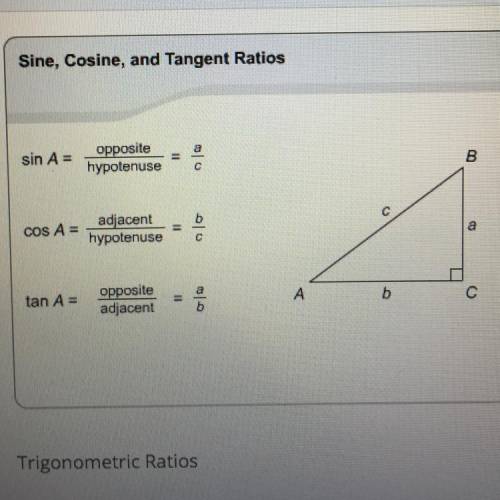
Mathematics, 29.06.2019 14:30 briannaandmakayla33
Using sine and cosine, it's possible to describe any (x, y) point as an alternative, (r,θ) point, where r is the length of a segment from (0,0) to the point and θ is the angle between that segment and the x-axis. this is called the polar coordinate system, and the conversion rule is (x, y) = (rcos(θ),rsin(θ but what are sin and cos

Answers: 2


Another question on Mathematics

Mathematics, 21.06.2019 16:10
To find the extreme values of a function f(x.y) on a curve x-x(t), y y(t), treat f as a function of the single variable t and use the chain rule to find where df/dt is zero. in any other single-variable case, the extreme values of f are then found among the values at the critical points (points where df/dt is zero or fails to exist), and endpoints of the parameter domain. find the absolute maximum and minimum values of the following function on the given curves. use the parametric equations x=2cos t, y 2 sin t functions: curves: i) the semicircle x4,y20 i) the quarter circle x2+y-4, x20, y20 b, g(x,y)=xy
Answers: 2

Mathematics, 21.06.2019 19:20
Brainliest ! which of the coordinates are not of th vertices of the feasible region for the system of inequalities y≤4,,x≤5,x+y> 6 a(2,4) b(0,6) c(5,4) d(5,1)
Answers: 2

Mathematics, 21.06.2019 19:30
The table below represents the displacement of a fish from its reef as a function of time: time (hours) x displacement from reef (feet) y 0 4 1 64 2 124 3 184 4 244 part a: what is the y-intercept of the function, and what does this tell you about the fish? (4 points) part b: calculate the average rate of change of the function represented by the table between x = 1 to x = 3 hours, and tell what the average rate represents. (4 points) part c: what would be the domain of the function if the fish continued to swim at this rate until it traveled 724 feet from the reef? (2 points)
Answers: 2

Mathematics, 21.06.2019 21:30
The price of a visit to the dentist is calculated according to the formula 50+100n50+100n where nn is the number of cavities the dentist finds. on your last visit to the dentist, 22 cavities were found. what was the cost of your visit?
Answers: 2
You know the right answer?
Using sine and cosine, it's possible to describe any (x, y) point as an alternative, (r,θ) point, wh...
Questions

Mathematics, 02.09.2020 04:01


Mathematics, 02.09.2020 04:01



Mathematics, 02.09.2020 04:01


English, 02.09.2020 04:01



Computers and Technology, 02.09.2020 04:01






Biology, 02.09.2020 04:01



Mathematics, 02.09.2020 04:01




